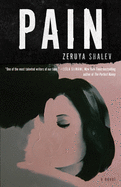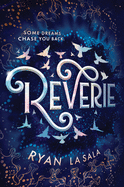 Jessica Fletcher (born Jessica Beatrice MacGill) writes her bestselling mysteries as "J.B. Fletcher." Her real-life exploits investigating actual murders were famously chronicled on a long-running television show that has given way to a series of books that follow the same Murder, She Wrote format. The 50th in that series, A Time for Murder (Berkley), features Jessica recalling her first murder investigation 25 years ago in Appleton, Maine. She now makes her home 30 miles away in the seaside town of Cabot Cove, where she is at work completing her next Murder, She Wrote title, The Murder of Twelve, which is due out in May 2020.
Jessica Fletcher (born Jessica Beatrice MacGill) writes her bestselling mysteries as "J.B. Fletcher." Her real-life exploits investigating actual murders were famously chronicled on a long-running television show that has given way to a series of books that follow the same Murder, She Wrote format. The 50th in that series, A Time for Murder (Berkley), features Jessica recalling her first murder investigation 25 years ago in Appleton, Maine. She now makes her home 30 miles away in the seaside town of Cabot Cove, where she is at work completing her next Murder, She Wrote title, The Murder of Twelve, which is due out in May 2020.
On your nightstand now:
I always have multiple books on my nightstand, at least two, and one of them is always a mystery. Right now, the mystery is The Night Fire by Michael Connelly. I so enjoy Harry Bosch and I enjoy him even more now that he's partnered with Renée Ballard. Guess I'm a sucker for female detectives!
Alongside The Night Fire is Little Women by Louisa May Alcott. I have a penchant for re-reading classics like that because I think absorbing their prose makes me better as a writer myself.
Favorite book when you were a child:
Depends on how old! I must confess to being a huge fan of the Nancy Drew books in junior high, and I even dabbled a bit in the Hardy Boys. As a younger child, I used to love Grimm's Fairy Tales. Rereading those now leaves me struck by their structure and intensity. Reading Grimm made me fall in love with the whole notion of storytelling, and I often muse that many of my murder mysteries are just retellings of those old fairy tales that are much darker than people realize. As Victor Hugo once said, "Good writers borrow, but great writers steal."
Your top five authors:
Oh my, just five? Now that's a challenge. I'm going to start with Charles Dickens, my personal favorite of his being The Mystery of Edwin Drood, which he never actually finished. Edgar Allan Poe, Arthur Conan Doyle and Agatha Christie, of course, though I prefer Jane Marple to Hercule Poirot--a girl thing, I guess! And my list wouldn't be complete without Philip Kerr and Ross Macdonald. How many is that, because I'd be remiss if I didn't mention Flannery O'Connor, whose short stories I can read a hundred times and always find something new.
Book you've faked reading:
Ulysses by James Joyce, when I was in college in New Hampshire. I once heard that the only way to read it was to have read it once before reading it for the first time. With apologies to all the classicists out there, this is one I just never could grasp.
 Book you're an evangelist for:
Book you're an evangelist for:
How about an author instead of a book? You might not know it from my books, but I'm quite the fan of noir so I love to point readers toward the series Donald Westlake wrote as Richard Stark featuring Parker. I'm also fond of recommending the great Lee Marvin movie Point Blank, which was based on a Parker novel called The Hunter.
Book you've bought for the cover:
Ha-ha! Well, I'm such a poor judge of what works that I always rely on my publisher to choose my covers. As far as other authors, I remember being in an airport and spotting a cover that featured a subway train. I'd heard of the author but never read any of his work. That book was Gone Tomorrow by Lee Child. And I've read all of Child's Jack Reacher books since then.
Book you hid from your parents:
It was something by Harold Robbins, but I don't remember the title. It was a paperback, and I do remember cutting off the cover so my parents wouldn't know I was reading something risqué!
Book that changed your life:
John Buchan's The Thirty-Nine Steps was the first book I read a single sitting. I was in high school at the time and absolutely devoured it when I was home sick from school one day. I can still quote passages!
Favorite line from a book:
How about a play instead, Shakespeare's Macbeth: "By the pricking of my thumbs, something wicked this way comes." I love that line because it defines the very nature of the mystery novel, something wicked entering the lives of someone or someones.
Five books you'll never part with:
Appropriately enough, let's start with Ray Bradbury's Something Wicked This Way Comes. Every sentence in that book is a work of art. Curtain, both Agatha Christie's and Hercule Poirot's final adventure, because she left strict instructions that it was not be published until after her death. As a writer, I'm struck by the odd sense of sentimentality to that. The Salzburg Connection, because that was Helen MacInnes's best one ever and she was a kind of role model for me. Dickens's Great Expectations because that's another I'm always revisiting. Let's see, one more... the last one's always the hardest to come up with because there are so many titles swimming through my mind, but I think I'll go with Death in Venice by Thomas Mann because I find it be a cautionary tale about sacrificing one's soul in the face of obsession, something all writers and artists need to be leery of!
Book you most want to read again for the first time:
There are so many I could give you, but I'll go with an Edgar Allan Poe short story: "The Murders in the Rue Morgue," because it introduced Auguste Dupin and ushered in the modern detective story. It's obviously a bit clichéd now, but the notion of the ultimate locked-room murder, a perfect puzzle, was magic the first time I read it.
The film you've re-watched the most:
No doubt about it: The Usual Suspects, an elegant Venn diagram of a tale that wraps a mystery in deep levels of misdirection. I've never written a screenplay, but if I ever did, I'd want it to be half as good as that one--better make that, a third!
 Toddlers love their "wiggly toes" and "smelly nose," their "legs that run" and "licky tongue" in I Love All of Me, Lorie Ann Grover and Carolina Búzio's (Scholastic, $9.99), upbeat book. Búzio's expressive, brightly colored illustrations depict a diverse group of children jubilantly acting out Grover's self-love-promoting text.
Toddlers love their "wiggly toes" and "smelly nose," their "legs that run" and "licky tongue" in I Love All of Me, Lorie Ann Grover and Carolina Búzio's (Scholastic, $9.99), upbeat book. Búzio's expressive, brightly colored illustrations depict a diverse group of children jubilantly acting out Grover's self-love-promoting text. I Am Peace: A Book of Mindfulness by Susan Verde, illustrated by Peter H. Reynolds (Abrams Appleseed, $8.99), emits an understandably meditative vibe. Verde's gentle primer for mindfulness practice is enhanced by Reynolds's dynamic illustrations, which give the whole work a feeling of fluidity as the watercolors seep unrestrained out of their outlines.
I Am Peace: A Book of Mindfulness by Susan Verde, illustrated by Peter H. Reynolds (Abrams Appleseed, $8.99), emits an understandably meditative vibe. Verde's gentle primer for mindfulness practice is enhanced by Reynolds's dynamic illustrations, which give the whole work a feeling of fluidity as the watercolors seep unrestrained out of their outlines. Tatsuhide Matsuoka's Jump! (Gecko Press, $12.99) opens up into a vertical, portrait format instead of the standard landscape. This choice allows for all of the animals inside--frog, kitten, grasshopper, rabbit--to jump straight up from the bottom of the composition to the top, with a turn of the page. Each animal has its own individually designed "boing": the frog goes "Boing!"; the rabbit goes "Bo-oing!"; the snail? "Uhm. Maybe not." Matsuoka's animals, all shown on plain backgrounds with tons of white space, seem filled with potential energy until... they Jump! A perfect exciting kickoff to an active 2020.
Tatsuhide Matsuoka's Jump! (Gecko Press, $12.99) opens up into a vertical, portrait format instead of the standard landscape. This choice allows for all of the animals inside--frog, kitten, grasshopper, rabbit--to jump straight up from the bottom of the composition to the top, with a turn of the page. Each animal has its own individually designed "boing": the frog goes "Boing!"; the rabbit goes "Bo-oing!"; the snail? "Uhm. Maybe not." Matsuoka's animals, all shown on plain backgrounds with tons of white space, seem filled with potential energy until... they Jump! A perfect exciting kickoff to an active 2020. 


 Jessica Fletcher (born Jessica Beatrice MacGill) writes her bestselling mysteries as "J.B. Fletcher." Her real-life exploits investigating actual murders were famously chronicled on a long-running television show that has given way to a series of books that follow the same Murder, She Wrote format. The 50th in that series, A Time for Murder (Berkley), features Jessica recalling her first murder investigation 25 years ago in Appleton, Maine. She now makes her home 30 miles away in the seaside town of Cabot Cove, where she is at work completing her next Murder, She Wrote title, The Murder of Twelve, which is due out in May 2020.
Jessica Fletcher (born Jessica Beatrice MacGill) writes her bestselling mysteries as "J.B. Fletcher." Her real-life exploits investigating actual murders were famously chronicled on a long-running television show that has given way to a series of books that follow the same Murder, She Wrote format. The 50th in that series, A Time for Murder (Berkley), features Jessica recalling her first murder investigation 25 years ago in Appleton, Maine. She now makes her home 30 miles away in the seaside town of Cabot Cove, where she is at work completing her next Murder, She Wrote title, The Murder of Twelve, which is due out in May 2020. Book you're an evangelist for:
Book you're an evangelist for:












